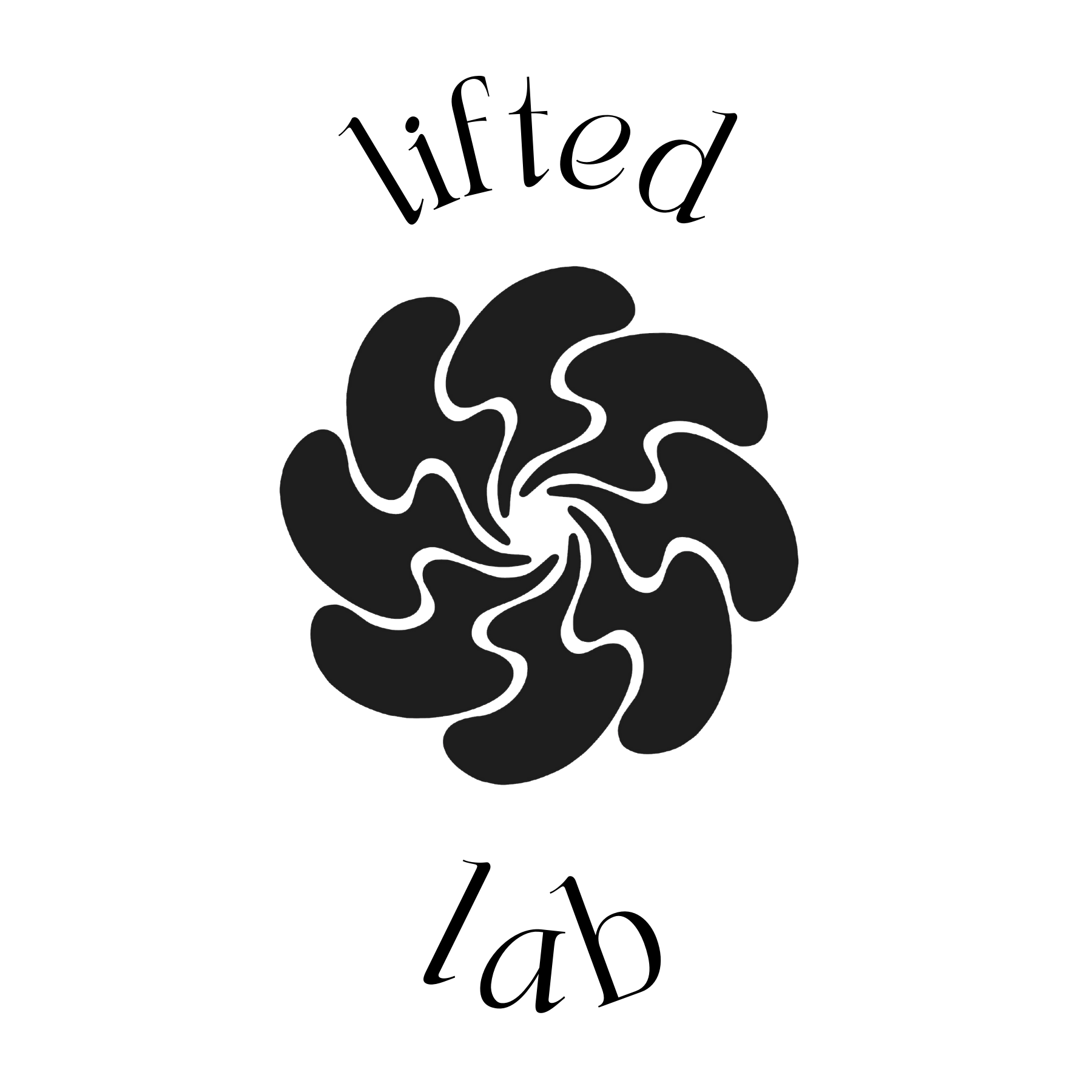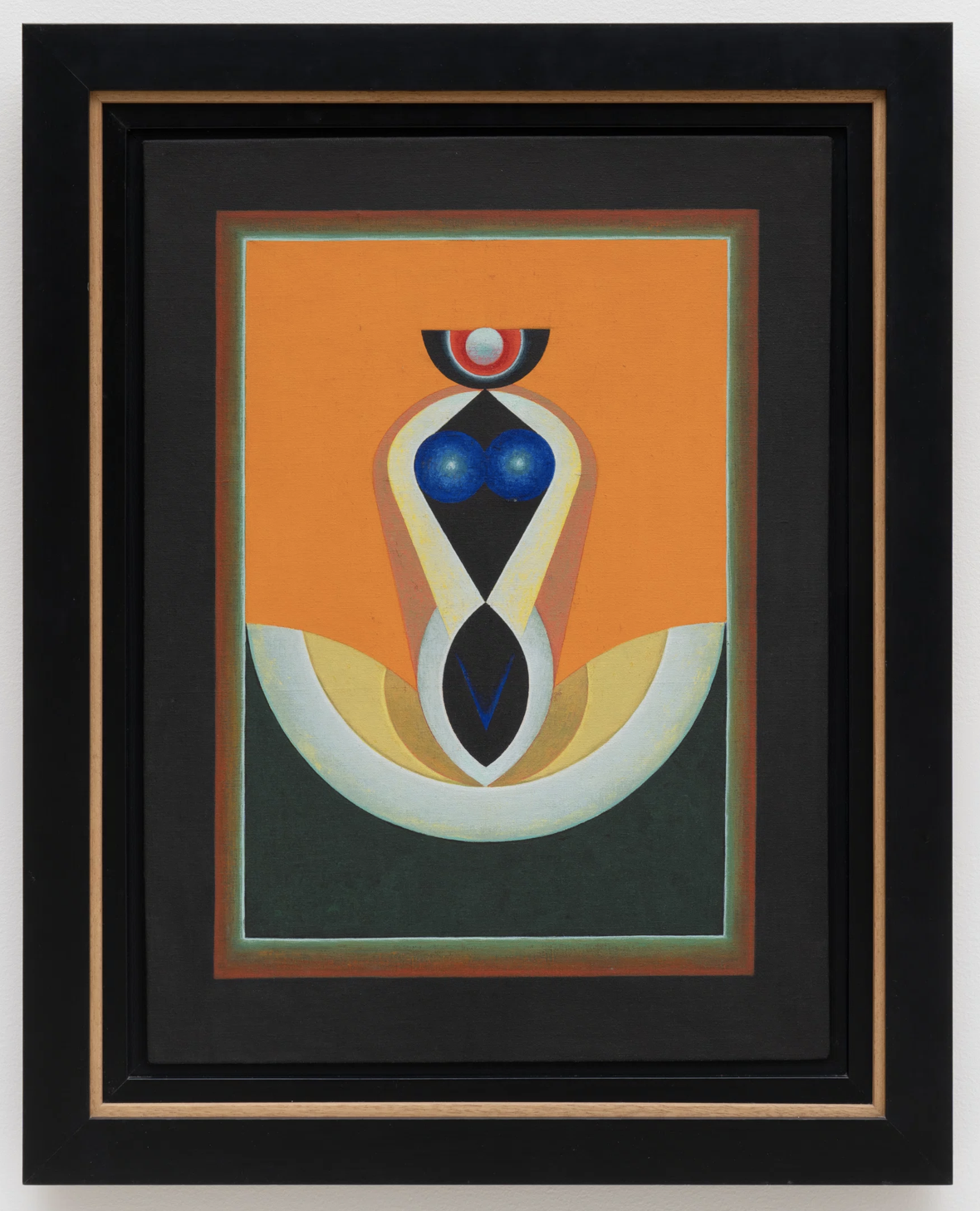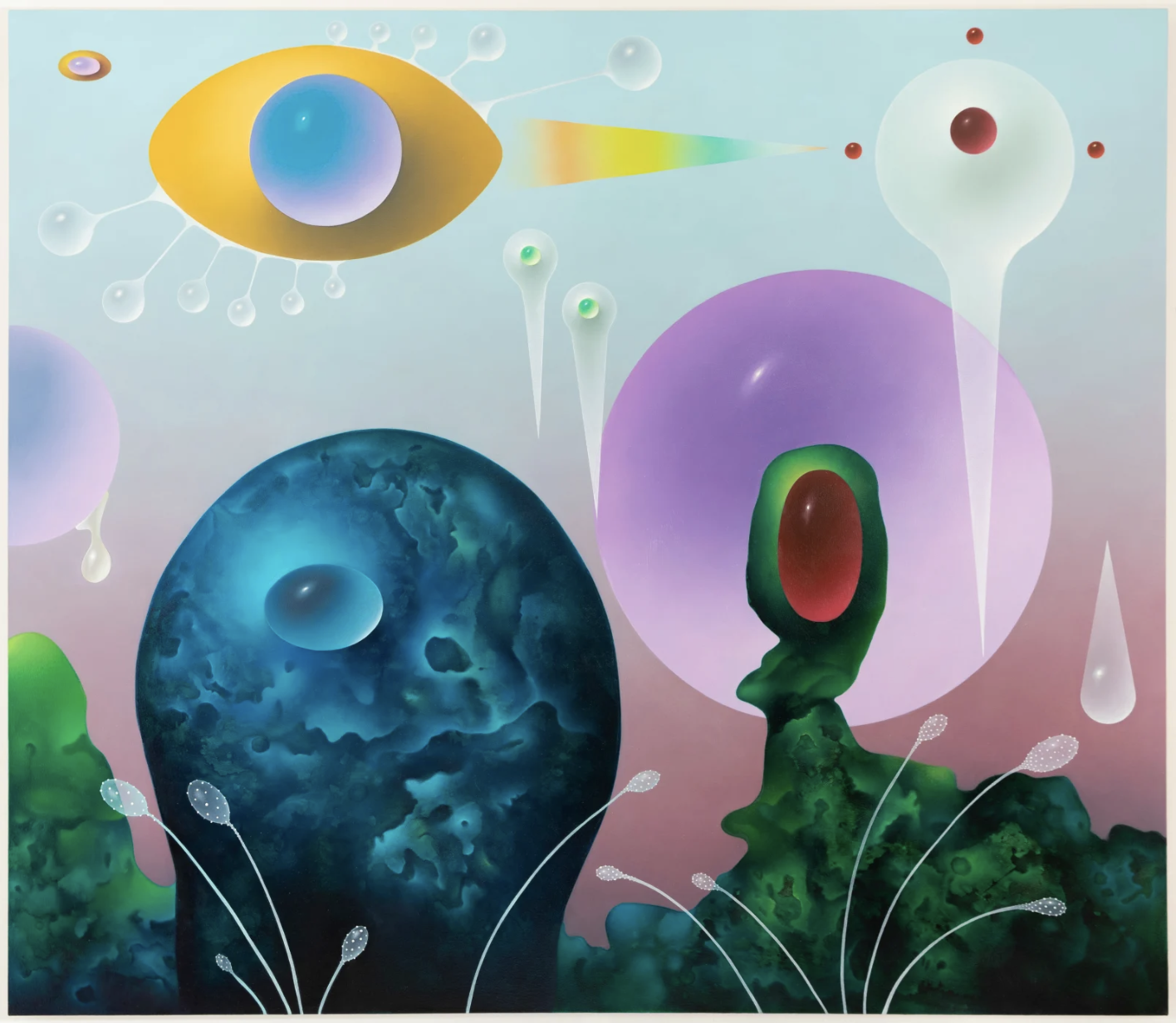Alicia Adamerovich "This is the time of the hour"
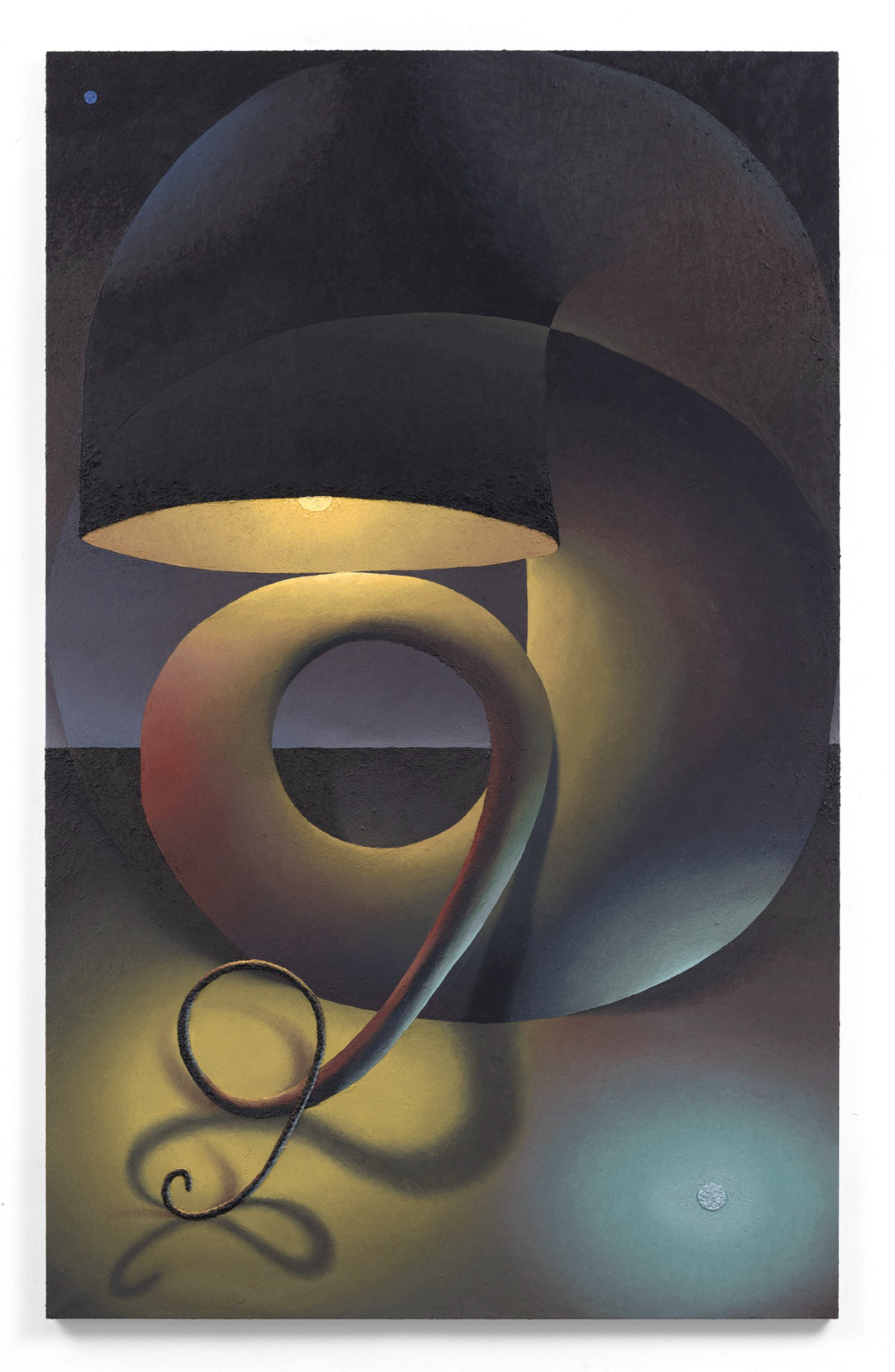
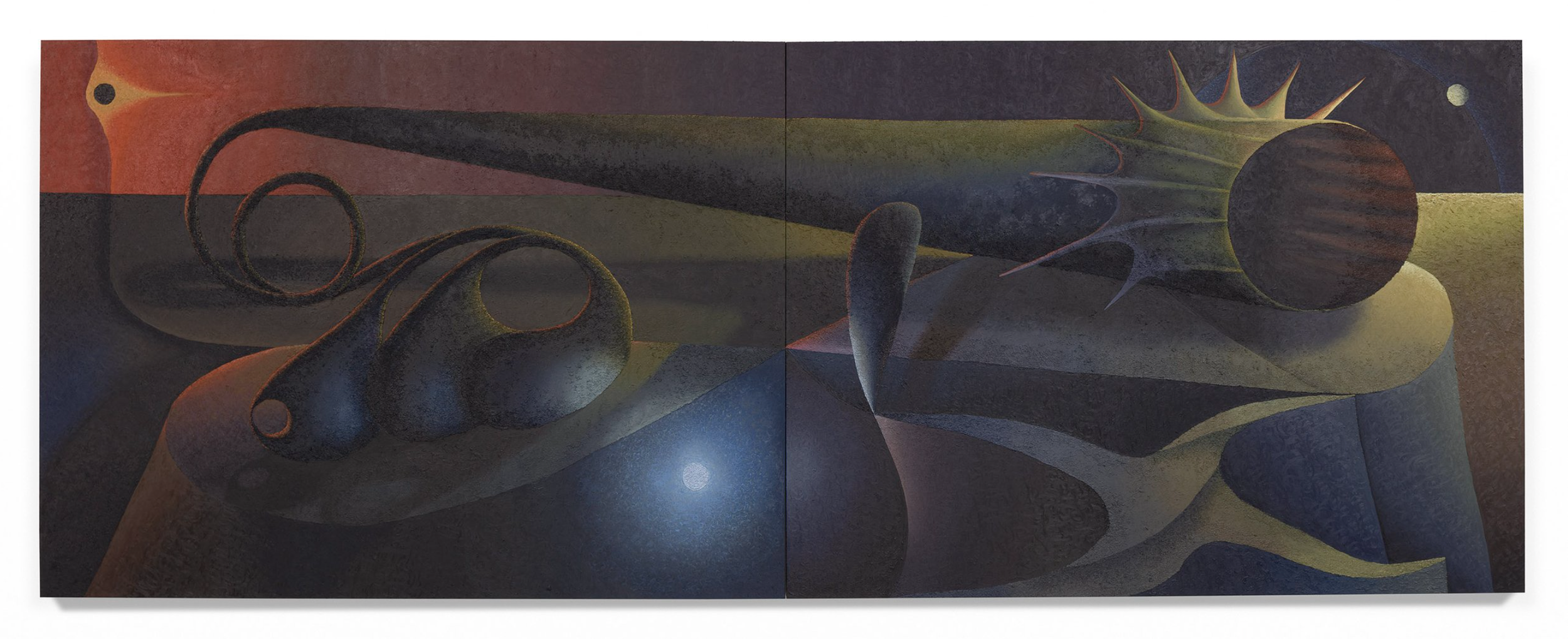
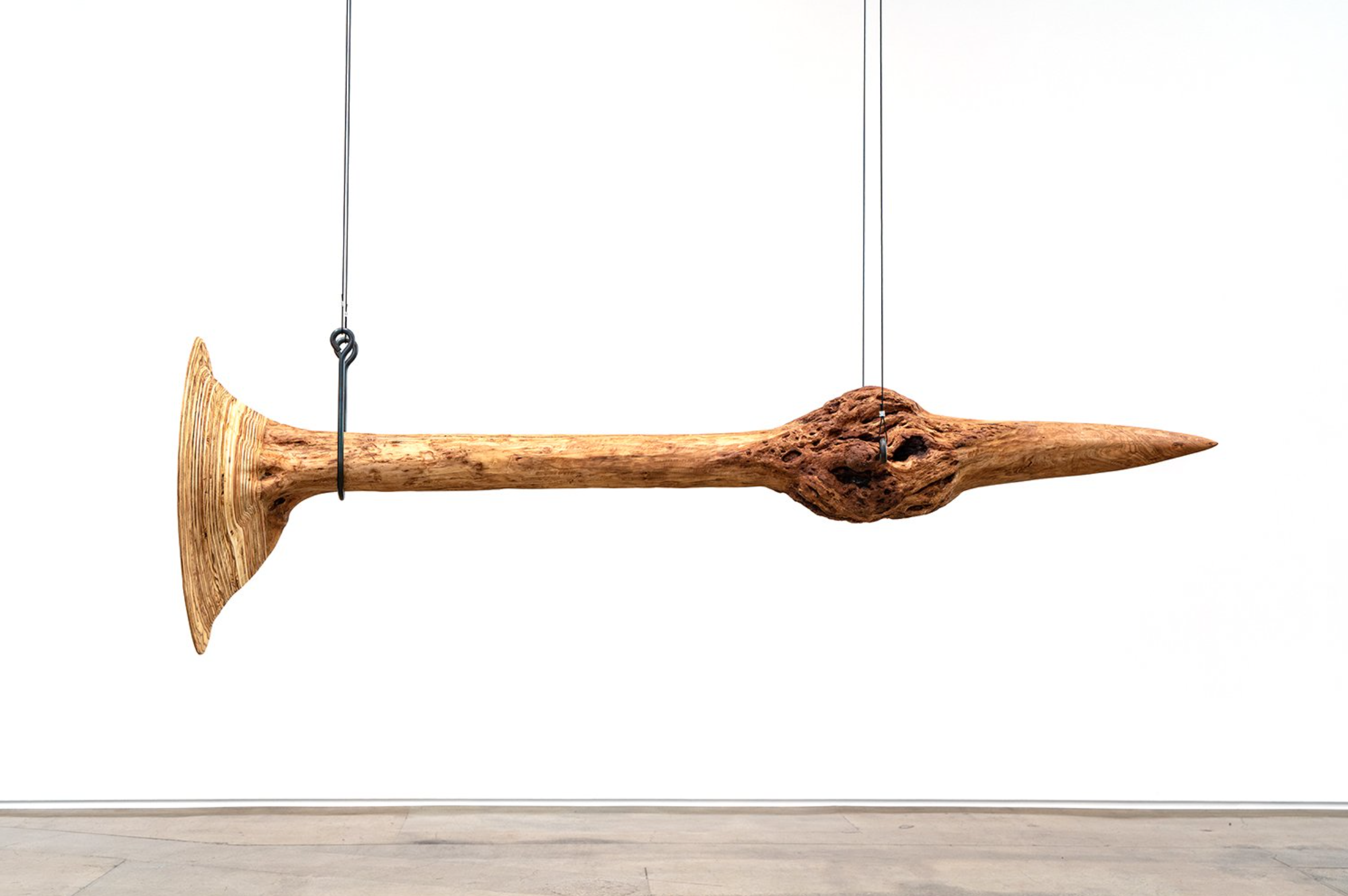
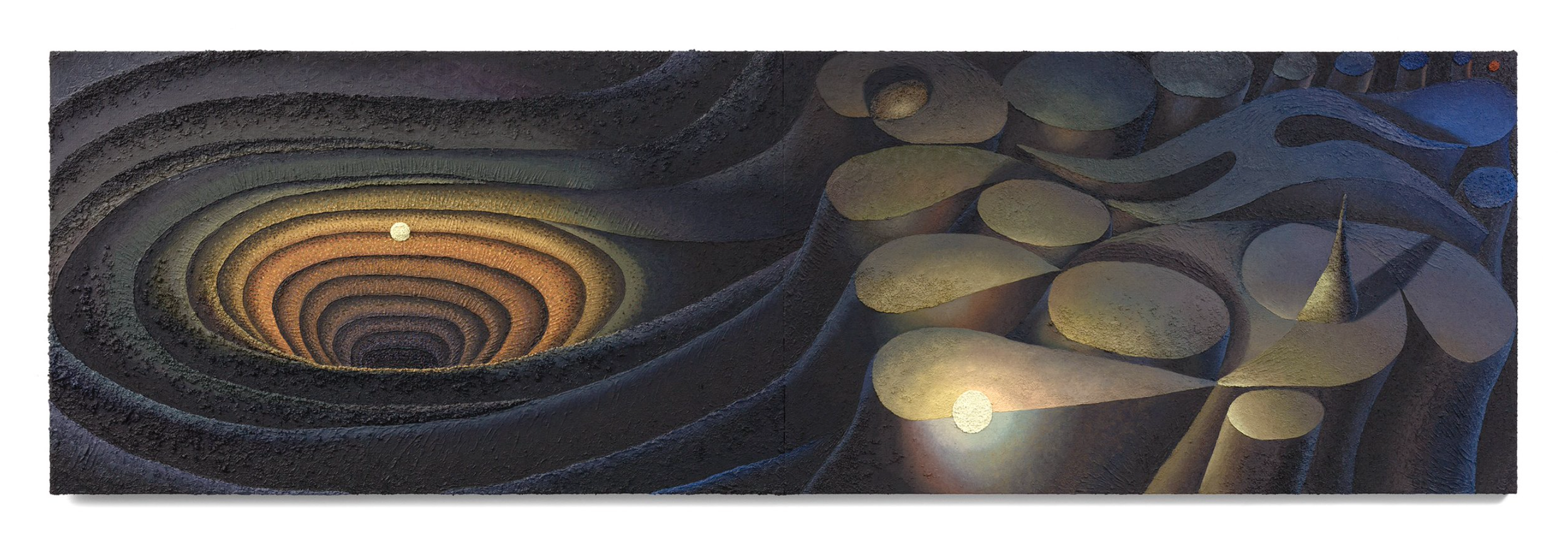


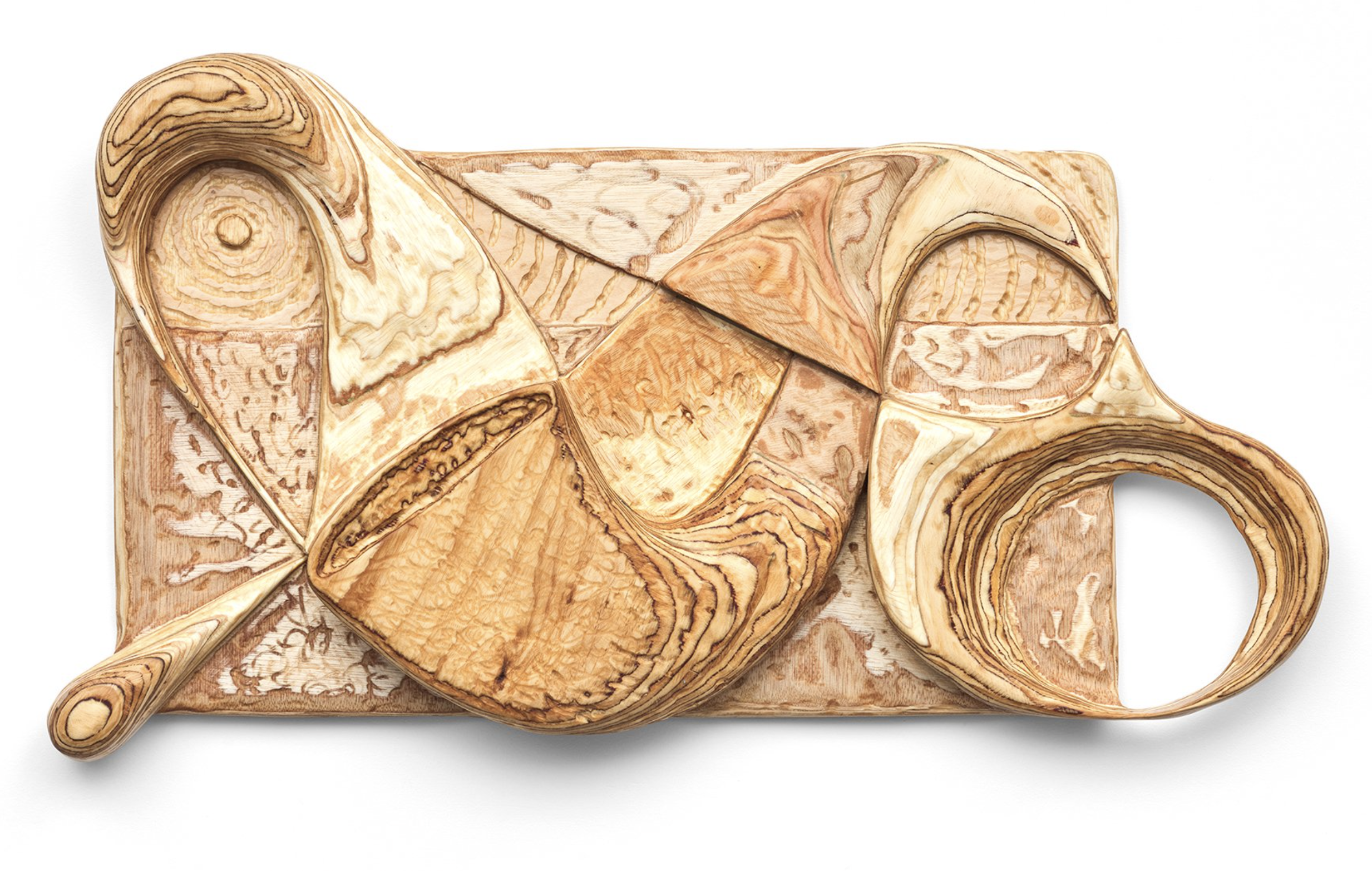
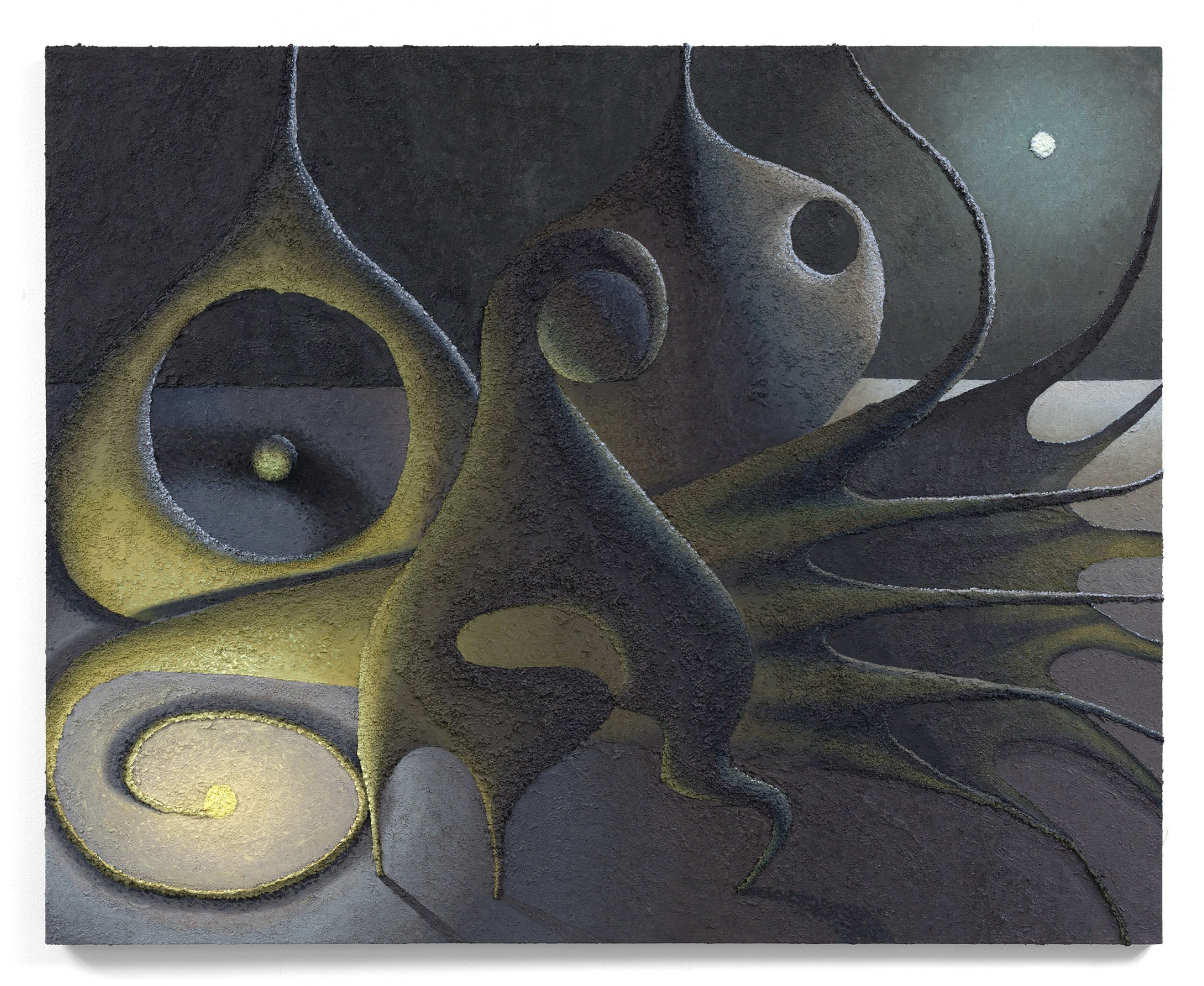
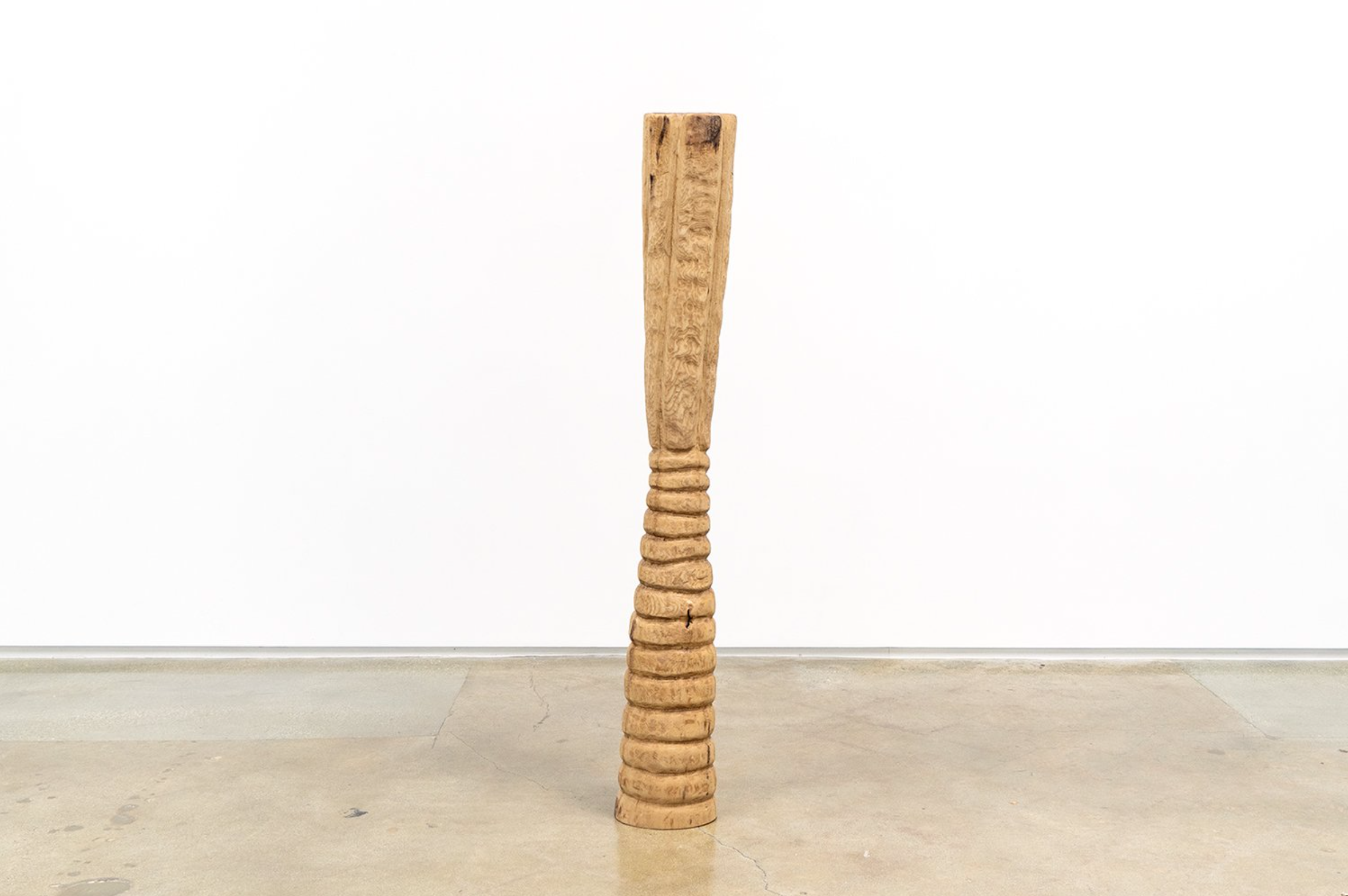
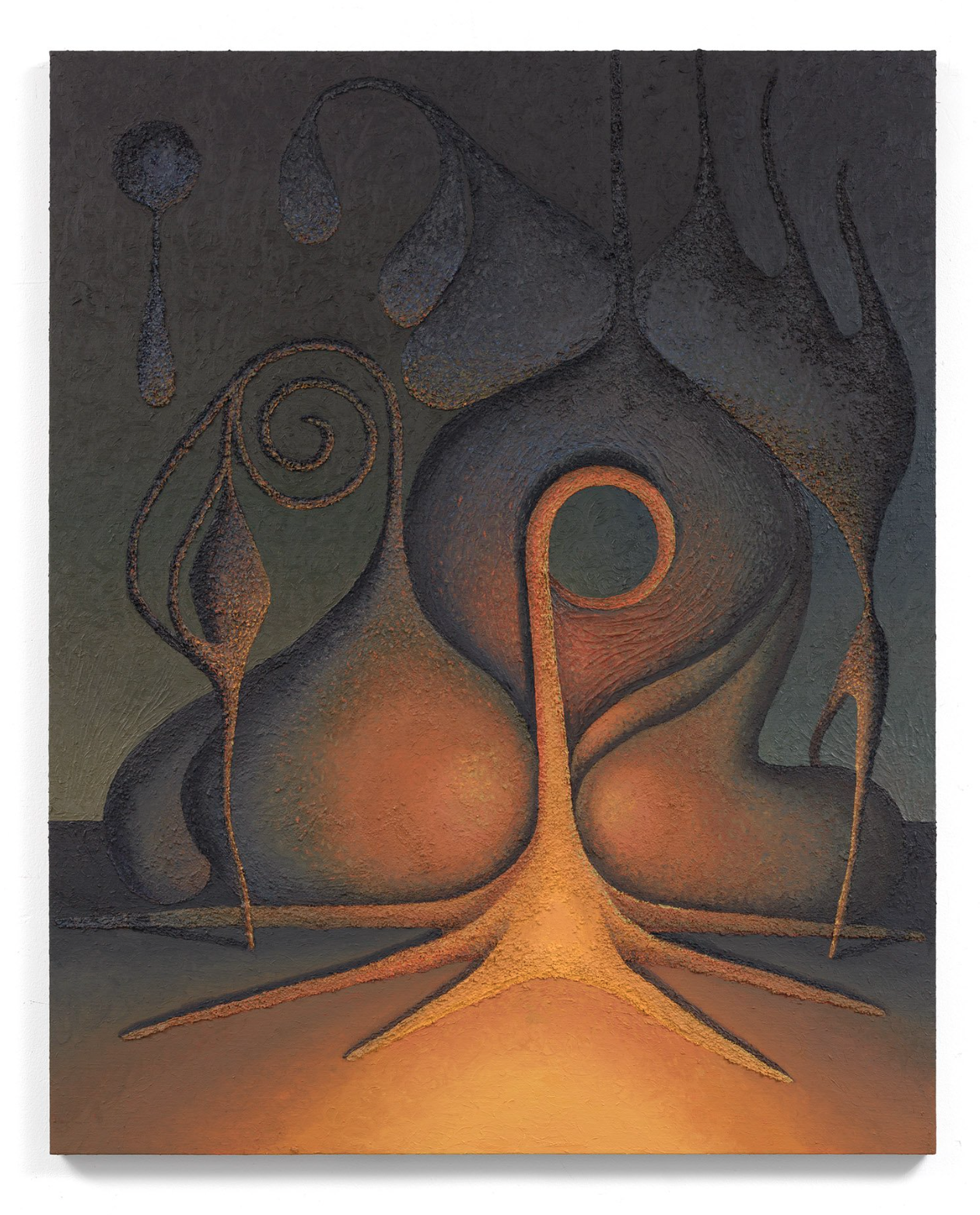
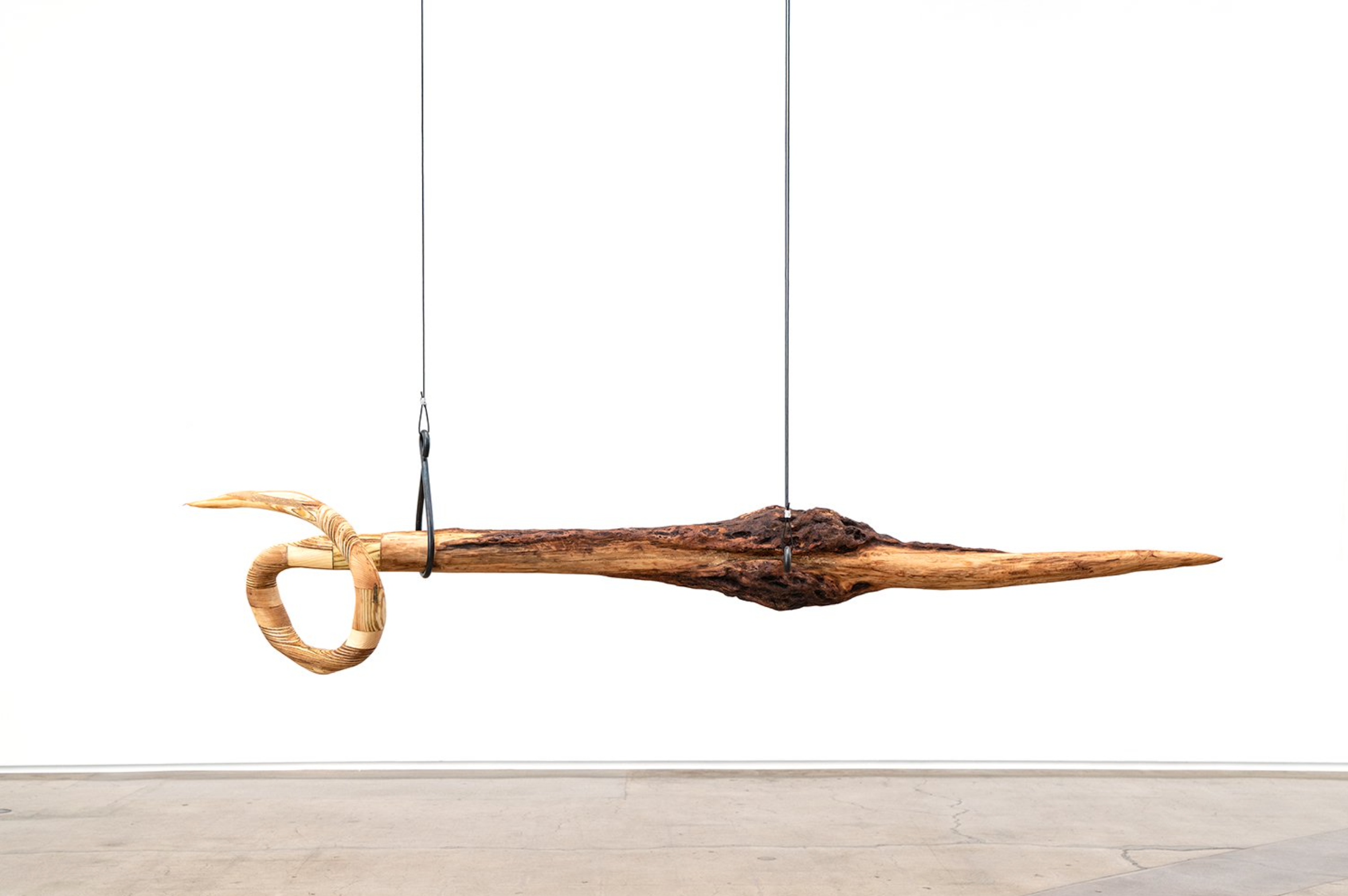









In This is the time of the hour, Adamerovich studies themes of overwhelm through introspective alien landscapes and wood sculptures that traverse the subconscious, inviting her audience to visualize their own psychological state.
The landscapes – seemingly barren with their darkened color palette and unsettling, organic surfaces of pumice, wax, and sand – come gracefully alive with radiant orbs and spiraling, structured appendages. Works like Blessed be thy cavity communicate the duality of seen and unseen, or as Adamerovich writes, “connections between emotion and the dichotomy of familiarity and alienation.”
Stylistically, the protruding and recessing contours carry over to sculpture as seen in Blaring in a vacuum. Adamerovich’s overlapping painting and sculptural practices harkens back to Surrealist artist Meret Oppenheim who integrated natural materials across her body of work. These amorphous shapes are anthropomorphic and seductive in nature with soft curvatures alternately drawn from the realms of the arboreal, anatomical, and fantastical.
The physicality of Adamerovich’s process allows for an interplay between interpretations of negative space and interior illuminations. Beyond self-reflection, other references guiding This is the time of the hour are the forests of her hometown in western Pennsylvania, creatures in an 80s sci-fi feature, and ancient artifacts. The natural quality of the recycled wood is revived in futuristic forms, manipulated into uncanny, horn-like structures. Analogous to a hellmouth, the abstracted collapsing rings echo Frank Stella’s phantasmagoric experimentations, as well as remnants of the Mono-ha movement.
“These forms represent thoughts and feelings,” Adamerovich explains. “I’m not trying to remake anything from our physical world; everything I’m making is psychological.”
Adamerovich’s work recalls the dreamlike renderings of Agnes Pelton, and Georgia O'Keefe's color sensibility. The voyeuristic portals found in her work articulated through surreal tenebrosity allow a glimpse into something strangely intimate and private, though welcoming of individual interpretation: “Although the experiences I’m able to create are personal, I think the ‘hard-to-place-ness” of being alive is universal in its absolute ridicule. Absurdity is a deeply familiar sensation and it runs deep throughout. It has everything to do with living in today's world.”
Press release and images via Kohn Gallery.
